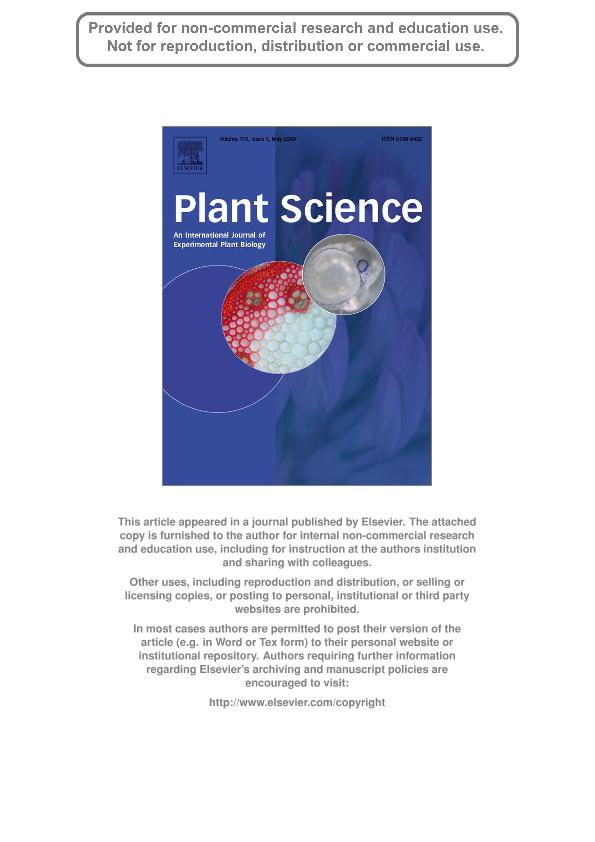Artículo
Role of nitric oxide in soybean cotyledon senescence
Jasid, Sebastian Alberto ; Galatro, Andrea Verónica
; Galatro, Andrea Verónica ; Villordo, Juan Javier; Puntarulo, Susana Ángela
; Villordo, Juan Javier; Puntarulo, Susana Ángela ; Simontacchi, Marcela Silvia
; Simontacchi, Marcela Silvia
 ; Galatro, Andrea Verónica
; Galatro, Andrea Verónica ; Villordo, Juan Javier; Puntarulo, Susana Ángela
; Villordo, Juan Javier; Puntarulo, Susana Ángela ; Simontacchi, Marcela Silvia
; Simontacchi, Marcela Silvia
Fecha de publicación:
05/2009
Editorial:
Elsevier Ireland
Revista:
Plant Science
ISSN:
0168-9452
Idioma:
Inglés
Tipo de recurso:
Artículo publicado
Clasificación temática:
Resumen
Senescence was studied in soybean (Glycine max, var ALM 4500) cotyledons from 10- and 25-day-old seedlings. Rejuvenated cotyledons, obtained by removing epicotyls from 5-day seedlings, showed a lower decrease in the content of photosynthetic pigments from day 10 to day 25, as compared to naturally senescent cotyledons. Unlike controls, rejuvenated cotyledons showed no changes in electrolyte leakage, chlorophyll a, and carotene content during the studied period. At day 10, nitric oxide (NO) content in rejuvenated cotyledons was higher than in naturally senescent cotyledons. The role of NO in senescence was assessed by exposing seedlings to sodium nitroprusside (SNP). SNP-treated cotyledons showed a constant NO content over the studied period of 4.0 0.4 nmol g1 FW, conserved photosynthetic pigment content and lower lipid radical content, as compared to naturally senescent cotyledons. These results suggest that NO can protect against senescence-dependent alterations in cotyledons, because (i) exogenous NO can partially protect naturally senescent cotyledons and (ii) rejuvenated cotyledons, which do not show the senescent phenotype, have higher endogenous levels of NO.
Palabras clave:
SOYBEAN COTYLEDONS
,
LIPID PEROXIDATION
,
NITRIC OXIDE
,
PROTEIN OXIDATION
Archivos asociados
Licencia
Identificadores
Colecciones
Articulos(IBIMOL)
Articulos de INSTITUTO DE BIOQUIMICA Y MEDICINA MOLECULAR
Articulos de INSTITUTO DE BIOQUIMICA Y MEDICINA MOLECULAR
Articulos(OCA HOUSSAY)
Articulos de OFICINA DE COORDINACION ADMINISTRATIVA HOUSSAY
Articulos de OFICINA DE COORDINACION ADMINISTRATIVA HOUSSAY
Citación
Jasid, Sebastian Alberto; Galatro, Andrea Verónica; Villordo, Juan Javier; Puntarulo, Susana Ángela; Simontacchi, Marcela Silvia; Role of nitric oxide in soybean cotyledon senescence; Elsevier Ireland; Plant Science; 176; 5; 5-2009; 662-668
Compartir
Altmétricas



